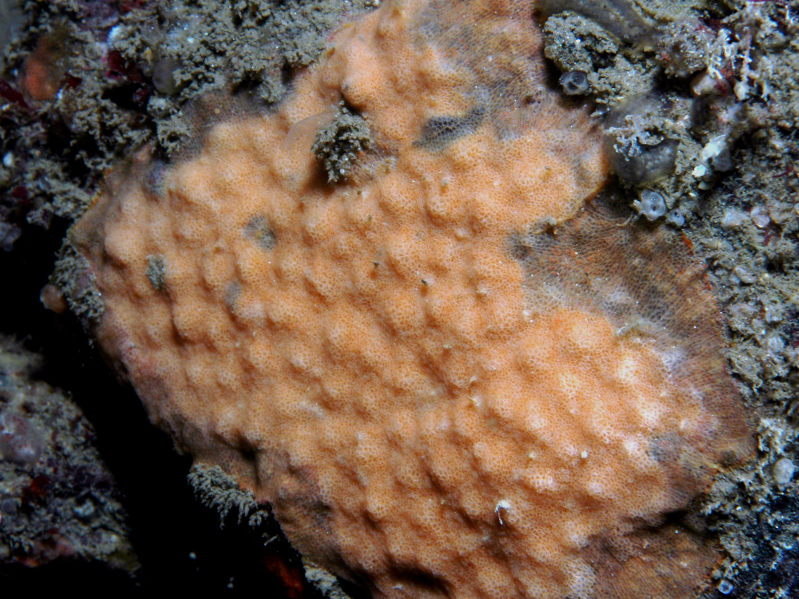Encrusting bryozoan (Parasmittina trispinosa)
Distribution data supplied by the Ocean Biodiversity Information System (OBIS). To interrogate UK data visit the NBN Atlas.Map Help
| Researched by | Eliza Gibson-Hall | Refereed by | This information is not refereed |
| Authority | (Johnston, 1838) | ||
| Other common names | - | Synonyms | - |
Summary
Description
This encrusting bryozoan forms extensive patches, 20 cm or more across. It is normally a dull orange-brown to yellowish-white in colour. Bumps are evenly distributed on the crust towards the centre of the colony. Colonies can occur in either simple or multiple layers. Individual zooids are 0.4-1.0 mm by 0.26-0.38 mm.
Recorded distribution in Britain and Ireland
Recorded around all British Coasts.
Global distribution
Recorded from Britain, north to western Norway, the Faroe Isles and into the Barents Sea in the Arctic Circle.
Habitat
This encrusting bryozoan is typically a sublittoral species found on large boulders or bedrock, often with vertical faces. It is able to colonize hard substratum including shells. It is found from shallow to subtidal waters out to the continental shelf. It is abundant on offshore shell banks and can tolerate environments with strong water movement.
Depth range
0-180 mIdentifying features
- Patches of 20 cm or more across.
- Dull orange to brown to yellow to white in colour.
- Zooid; 0.4-1.0 mm by 0.26-0.38 mm.
- Bumps on crust evenly distributed towards the centre.
Additional information
-none-Listed by
- none -
Bibliography
Hayward, P.J. & Ryland, J.S. 1979. British ascophoran bryozoans. London: Academic Press.
Hayward, P.J. & Ryland, J.S. 1999. Cheilostomatous Bryozoa. Part II Hippothooidea - Celleporoidea. London: Academic Press. [Synopses of the British Fauna, no. 14. (2nd edition)]
Datasets
NBN (National Biodiversity Network) Atlas. Available from: https://www.nbnatlas.org.
OBIS (Ocean Biodiversity Information System), 2025. Global map of species distribution using gridded data. Available from: Ocean Biogeographic Information System. www.iobis.org. Accessed: 2025-07-30
Citation
This review can be cited as:
Last Updated: 22/08/2018



